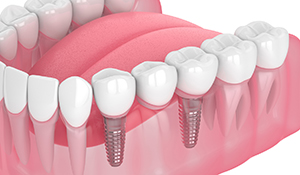The Centers for Disease Control and Prevention (CDC) says that medical tourism, including dental surgery, is a worldwide, multibillion-dollar market that continues to grow with millions of U.S. residents travelling international each year for medical care.
The CDC 2020 Yellow Book: Health Information for International Travel says that medical tourists from the U.S. often seek dental care, non-cosmetic surgery (such as orthopedic surgery), cosmetic surgery, fertility treatments, organ and tissue transplantation, and cancer treatment.
Reasons for Medical, Dental Travel Abroad
The CDC says there are several reasons that U.S. residents travel abroad for dental and medical work, with price being the top reason, especially for those who lack affordable insurance coverage.
CDC says residents embark on a medical tourism trip because:
- Cost: To get treatment or a procedure that may be cheaper in another country.
- Culture: To receive care from a healthcare provider who shares the traveler’s culture and language.
- Unavailable or unapproved procedure: To get a procedure or therapy that is not available or approved in the United States.
Costs Savings Prime Driver of Dental Surgery Tourism
Dental surgery tourism for U.S. residents is primarily about costs vs. unavailable or unapproved procedures or even cultural aspects.
According to Patients Beyond Borders, a company that researches medical procedures in other countries, the top 10 destinations for dental tourism among U.S. patients are:
- Mexico

- Thailand
- Hungary
- Spain
- Poland
- Costa Rica
- The Philippines
- Malaysia
- Turkey
- The Czech Republic
Cost savings can be substantial, between 40 and 65 percent in Mexico, 45 and 65 percent in Costa Rica and 50 and 75 percent in Thailand.
A root canal that runs between $600 and $1,400 in the U.S., depending on location in the mouth, runs an average of $300 in Mexico and $100 in Thailand.
Dental crowns, which run between $500 and $2,500 in the U.S., are $275 average in Costa Rica and under $200 in Turkey.
The Risks vs. Rewards of Dental Surgery Tourism
Those considering dental surgery tourism need to understand the risks of seeking treatment outside of the U.S.
The CDC says “medical tourism can be risk” with complications such as:
- Infectious Disease: All medical procedures have some risk of complications, those associated with procedures done in other countries include wound infections, bloodstream infections, donor-derived infections, and diseases such as hepatitis B, hepatitis C, HIV.
- Antibiotic Resistance: Antibiotic resistance is definitely a concern and a global problem; however, you are more likely to get an antibiotic-resistant infection in some countries. Highly drug-resistant bacteria have caused infectious disease outbreaks among medical tourists.
- Quality of Care: Some countries’ requirements for maintaining licensure, credentialing, and accreditation may also be less than what would be required in the United States. In some countries, counterfeit medicines and lower quality medical devices may be used.
- Communication Challenges: Communicating with staff at the destination and healthcare facility may be challenging. Receiving care at a facility where you do not speak the language fluently could lead to misunderstandings about your care.
- Continuity of Care: You may need to get health care in the United States if you have complications after returning.
Continuity of care, and sometimes picking up the pieces from slipshod work, is often left to dentists back in the U.S.
Craig Barrows, DDS, practices in Yuma, Arizona, closest to Los Algodones, a Mexican border town with 5,000 residents … and 350 dentists. Barrows says he has seen his share of patients who were unhappy with the work they received there, and some dental tourists get “completely taken advantage of”.
In “Worth the Trip? A Look at Dental Tourism” he describes a patient who had $25K worth of implants placed in Los Algodones and came to him for follow-up care after realizing the implants were infected. None of the implants were guaranteed, significantly impacting the cost savings the patient initially anticipated by going to Mexico.
Top 5 Risks Associated with Dental Surgery Tourism
The Organization for Safety Asepsis and Prevention (OSAP) says the risk for infections and other complications is very real for dental surgery tourists.
“Most of us are aware of the high U.S. standards for infection control and safety in health care. But in many parts of the world, gloves, sterile instruments, disposable needles, and safe water are not routine elements of dental practice. Furthermore, the standards for educating and licensing dental professionals vary widely,” says the OSAP.
Colgate says that while dental surgery tourism can seem tempting, the “true cost might be more expensive than you think.”
The top five risks for dental surgery tourist, according to Colgate:
- Lack of Regulation: In the U.S. the American Dental Association, CDC, FDA and state dental boards are all working to protect patients but those protections are not necessarily built into other countries' systems of care.
- Germs and Bacteria: Tourists who suffer ailments from exposure to germs and bacteria in water their bodies are not used to, may suffer the same problems with water used in dental procedures abroad.
- Recovery Issues: Patients suffering post-procedure problems such as infections will not have access to U.S.-level of healthcare should they need emergency or urgent help.
- No Insurance: Should problems arise from your dental surgery tourism, your insurance may not cover subsequent procedures in the U.S. to correct so always check with your insurance plan before travelling.
- Medical and Dental History: Your international provider will not have access to your medical and dental history, and in the future, your U.S. providers will not have access to the medical and history of procedures done abroad.
“Nobody wants to pay more than is necessary for dental care, but some things aren't worth saving a few bucks for when it comes to your health and well-being,” Colgate concludes.
Contact Northwest Oral & Maxillofacial Surgery today to find out how we can work with your insurance company for you to obtain maximum coverage for your procedure.







